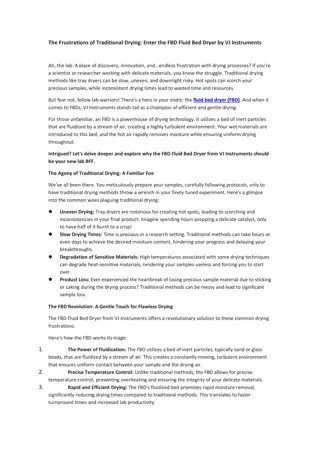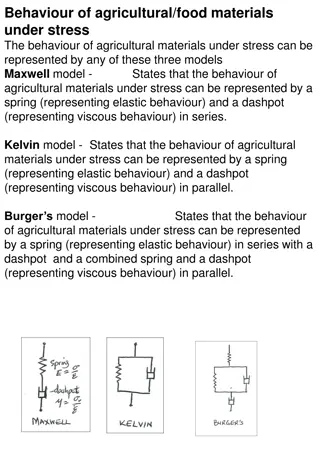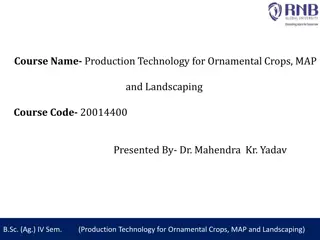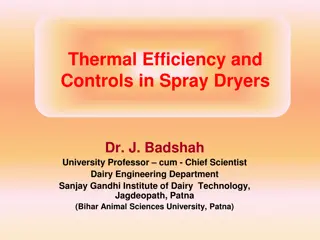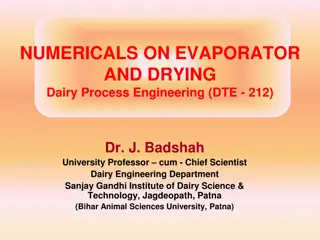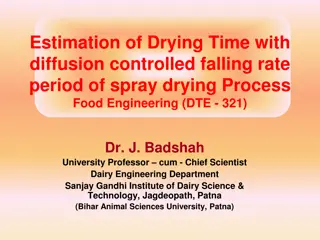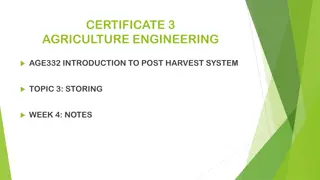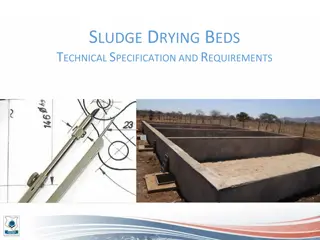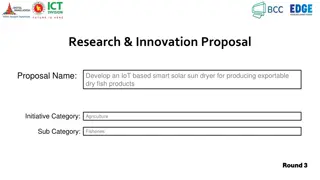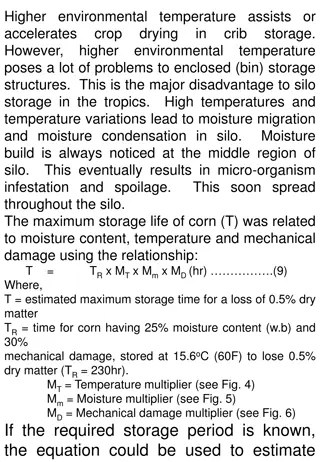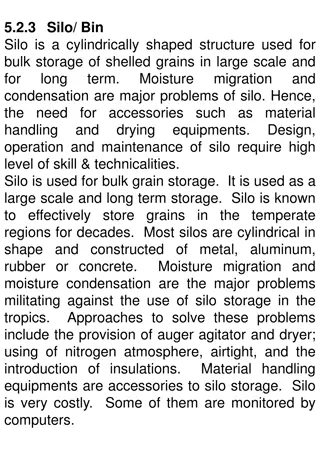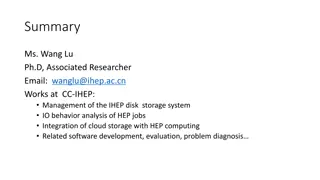Understanding Agricultural Materials Drying and Storage Methods
Explore the principles of drying agricultural materials, factors influencing drying methods, and categories of drying processes. Learn about water removal energy requirements, maize moisture content calculations, Fineness Modulus, water forms in foods, and stress behavior of agricultural materials.
Download Presentation

Please find below an Image/Link to download the presentation.
The content on the website is provided AS IS for your information and personal use only. It may not be sold, licensed, or shared on other websites without obtaining consent from the author. Download presentation by click this link. If you encounter any issues during the download, it is possible that the publisher has removed the file from their server.
E N D
Presentation Transcript
LABORATORY 7 Storage methods Objective: To familiarize students with different methods of storage available both on farm and off farm Facility: 1. University Seed processing and storage unig 2. Strategic Reserve in Ibadan Procedure: Students are taken on a study tour of the seed processing and storage unit to identify various storage units and machinery. Students are taken to one of the Nation s strategic Reserve Location in Ibadan to identify and specify the storage systems and processes Result: Students to submit a study tour report to include Estblishment (s) visited Process lines Storage units and Processing machinery Comparism of Industrial storage/off-farm and on-farm storage structures Sieve Mesh % of Material on each Screen 2 1.5 7.0 20.0 31.5 3/8 4 8 14 28
UNIVERSITY OF AGRICULTURE, ABEOKUTA DEPARTMENT OF AGRICULTURAL ENGINEERING First Semester B.SC. Examination 2010/2011 Session AGE 407: Engineering Properties and Processing of Agricultural Materials (3 Units) INSTRUCTION: ANSWER QUESTION ONE AND ANY OTHER TWO TIME:21/2HOURS QUESTION ONE (30 marks) a. Define the following terms with respect to drying of agricultural materials: (i) Grain Drying (ii) Psychometric (iii) Relative Humidity (iv) Specific volume and (v) Enthalpy (b) What are the materials factors that affect the choice of a drying method? (c). Mention and explain briefly, three categories in which drying processes can be classified. (d) What do you understand by constant rate and falling rate in drying? Give the governing
21oC, calculate the quantity of heat energy required per unit weight of the original material, for drying under atmospheric pressure. The latent heat of vaporization of water at 100oC and at standard atmospheric pressure is 2257kJ/kg. The specific heat capacity of the food is 3.8kJ/kg/oC and of water is 4.186kJ/kg/oC. Find also, the energy requirement/kg water removed. QUESTION TWO (20 marks) (i) A biscuit factory obtained maize from two sources (20 tonnes each), one has 12% moisture content (mc) dry basis and the other 12% mc wet basis. Which one has more dry matter? Justify your answer with calculations. ii) In (i) above, the company paid N60000.00 per tonne for the maize at 12% mc dry basis. How much should a tonne cost at 12% mc wet basis. If the
QUESTION THREE (20 marks) (i) What do you understand by Fineness Modulus and Uniformity Index? (ii) Describe how to determine the Fineness Modulus of a feed in the laboratory. (iii) Below is a result of a sieve experiment using poultry feed. From this result, calculate the Uniformity Index. How can you describe the feed? QUESTION FOUR (20 marks) What are the five forms in which water is found in food materials? Give a brief description of any five geometric characteristic used in describing the shape of fruits and vegetables. Describe how the Terminal Velocity of an agricultural material can be obtained in the laboratory. QUESTION FIVE (20 marks) Briefly explain (using models) how the behaviour of agricultural/food materials under stress are represented (sketch where necessary). Give a detailed description (with equations




